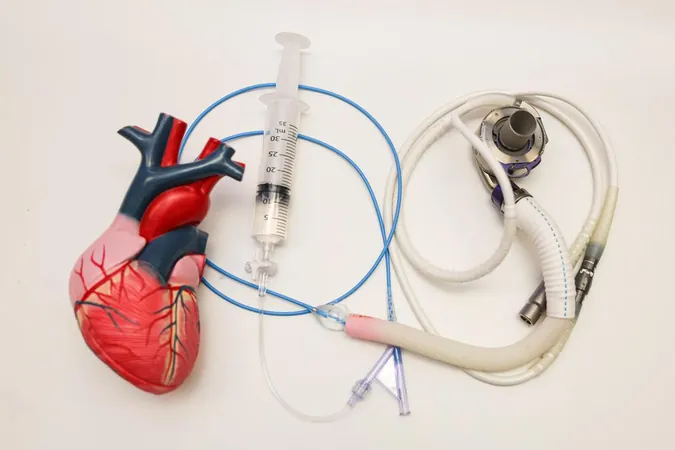
GLP-1 Receptor Agonists: The Promising Solution for Metabolic Dysfunction-Associated Steatohepatitis (MASH) and Liver Health
2025-03-27
Author: Siti
Recent research indicates that glucagon-like peptide-1 receptor agonists (GLP-1 RAs) could revolutionize how metabolic dysfunction-associated steatohepatitis (MASH) is managed, offering significant benefits for liver health. According to a comprehensive review published in *Expert Opinion on Investigational Drugs*, GLP-1 RAs are not just effective in reducing liver fat; they also play a crucial role in slowing the progression of fibrosis and aiding the resolution of MASH—a condition affecting millions worldwide.
The prevalence of MASH is soaring, leading to an immense financial burden on the healthcare system. This burden is magnified by the common appearance of other health issues alongside MASH, such as obesity, hypertension, and cardiovascular diseases. Data reveals that individuals diagnosed with MASH incur over seven times the medical costs related to liver health when compared to healthier populations, along with higher hospitalization rates due to cardiovascular problems and overall health complications.
While lifestyle changes and weight management are fundamental tactics for addressing MASH, there is currently only one FDA-approved treatment specifically targeting this condition in the United States. The ongoing demand for effective treatment alternatives emphasizes the necessity to improve patient outcomes, reduce costs, and manage the associated comorbidities more effectively.
The role of gastroenterologists is critical for diagnosing and managing MASH, yet there is a notable lack of research focused on effective management strategies for gastroenterologists. Recent interest has shifted towards exploring the pharmacological impact of GLP-1 RAs in tackling MASH and its related conditions, particularly in managing obesity.
Research highlights that GLP-1 RAs have demonstrated remarkable potential in alleviating liver steatosis, fibrosis, and inflammation. For instance, semaglutide (marketed as Ozempic and Wegovy) has been proven to significantly lower hepatic fat and improve liver steatosis in rigorous clinical trials. Another phase two study showed a notable resolution of MASH without fibrosis progression, further showcasing the efficacy of semaglutide against inflammatory markers.
Moreover, the weight-loss advantages provided by semaglutide and liraglutide (Victoza) extend beyond mere numbers; patients have reported enhanced physical functionality and overall well-being, making these medications an attractive option for those struggling with MASH.
Safety assessments indicate that GLP-1 RAs are generally well-tolerated, although gastrointestinal side effects like nausea and diarrhea may occur, particularly when doses are escalated. These adverse effects are often temporary and diminish over time as the body adjusts to the treatment.
Furthermore, additional research suggests that GLP-1 RAs may offer therapeutic benefits for managing other prevalent conditions linked to MASH, including chronic kidney diseases, obstructive sleep apnea, and certain cardiovascular issues.
In conclusion, as we continue to grapple with the metabolic, inflammatory, and fibrotic challenges posed by MASH, GLP-1 receptor agonists appear to be a promising avenue for future interventions. Strategic research and tailored treatment approaches will be essential in optimizing the management of MASH and changing the lives of those affected by this increasingly common ailment.
Stay tuned as more updates unfold on this groundbreaking treatment, and learn how GLP-1 RAs could transform the future of liver health!




 Brasil (PT)
Brasil (PT)
 Canada (EN)
Canada (EN)
 Chile (ES)
Chile (ES)
 Česko (CS)
Česko (CS)
 대한민국 (KO)
대한민국 (KO)
 España (ES)
España (ES)
 France (FR)
France (FR)
 Hong Kong (EN)
Hong Kong (EN)
 Italia (IT)
Italia (IT)
 日本 (JA)
日本 (JA)
 Magyarország (HU)
Magyarország (HU)
 Norge (NO)
Norge (NO)
 Polska (PL)
Polska (PL)
 Schweiz (DE)
Schweiz (DE)
 Singapore (EN)
Singapore (EN)
 Sverige (SV)
Sverige (SV)
 Suomi (FI)
Suomi (FI)
 Türkiye (TR)
Türkiye (TR)
 الإمارات العربية المتحدة (AR)
الإمارات العربية المتحدة (AR)